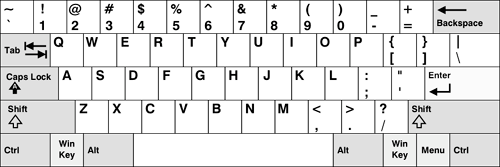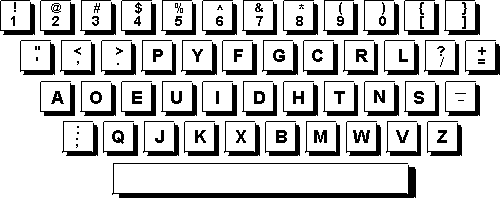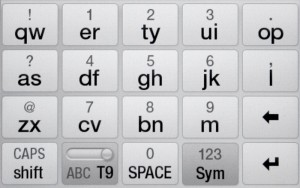The reason dates back to the time of manual typewriters. When it was first invented, they had keys arranged in an alphabetical order, until configuration was desired over convention.
Most people were taught that the man who invented the keyboard created the QWERTY design to slow typists down because the faster someone typed, the more often the typewriter jammed. So, the story goes that he arranged the keys with the most common letters in hard to reach spots, to slow typists down and try to avoid this problem.
Okay, that was partially true because the construction of the ?Type Writer? had flaws that made the product susceptible to jams and the solution was to place commonly used letter-pairs (like ?th? or ?st?) so that their typebars were not neighboring; avoiding jams.
After the problem associated with alphabetical arrangement was recognized, Christopher Latham Sholes (QWERTY keyboard inventor) struggled for the next five years to perfect his invention, making many trial-and-error rearrangements of the original machine?s alphabetical key arrangement.

But then in 1873 Sholes?s business associate, James Densmore, successfully sold the manufacturing rights for the Sholes & Glidden Type-Writer to E. Remington and Sons (manufacturer of firearms and later typewriters). After they purchased the device, Remington made several adjustments, creating a keyboard with essentially the modern QWERTY layout.
The QWERTY keyboard is very different from the Dvorak keyboard layout. The Dvorak keyboard layout tries to minimize the distance travelled by the fingers. It also tries to make the typist alternate hands on consecutive letters as often as possible.

The Dvorak layout places all of the most commonly used letters in the home row so your fingers don?t have to move at all to hit these keys. The left hand has all of the vowels and some consonants and the right hand has only consonants. So, there are very few words in the English language that can be typed with only one hand on the Dvorak keyboard.
The QWERTY layout became popular with the success of the Remington ?2 of 1878, the first typewriter to include both upper and lower-case letters, using a shift key.
Alternating hands while typing is a desirable trait in a keyboard design. While one hand types a letter, the other hand can prepare to type the next, making the process faster and more efficient. However, when a string of letters is typed with the same hand, the chances of involuntary repetitions are increased, thus decreasing speed and increasing errors.
In the QWERTY layout many more words can be spelled using only the left hand than the right hand.
Did you know that thousands of English words can be spelled using only the left hand, while only a couple of hundred words can be typed using only the right hand?
Contrary to popular belief, the QWERTY layout was not designed to slow the typist down, but rather to speed up typing by preventing jams. Indeed, there is evidence that, aside from the issue of jamming, placing often-used keys farther apart increases typing speed, because it encourages alternation between the hands.
Computer Keyboards
The first computer terminals such as the Teletype used the QWERTY layouts and added keys such as escape (ESC) which had special meanings to computers. Later keyboards added function keys and arrow keys. Since the standardization of PC-compatible computers after the 1980s, most computer keyboards have followed this standard.
The words ?typewriter?, ?proprietor?, ?perpetuity?, and ?repertoire? are the longest English words that can be written using only the keys in the top row.
Half QWERTY

A half QWERTY keyboard is a combination of an alpha-numeric keypad and a QWERTY keypad, designed for mobile phones. In a half QWERTY keyboard, two characters share the same key, which reduces the number of keys and increases the surface area of each key, useful for mobile phones that have little space for keys. It means that ?Q? and ?W? share the same key and the user must press the key once to type ?Q? and twice to type ?W?.
The Nokia E55 uses a half QWERTY keyboard layout.
 Nokia E55
Nokia E55
This post was first published in kodehauz


